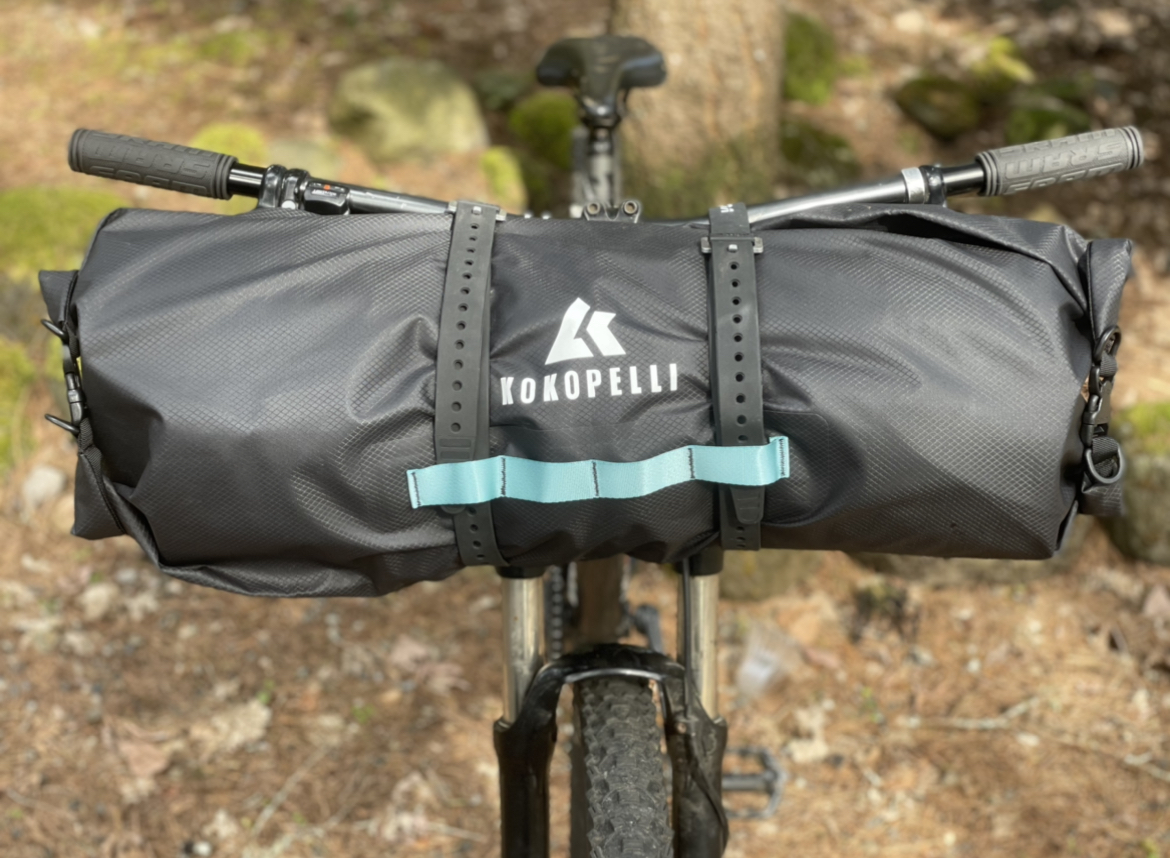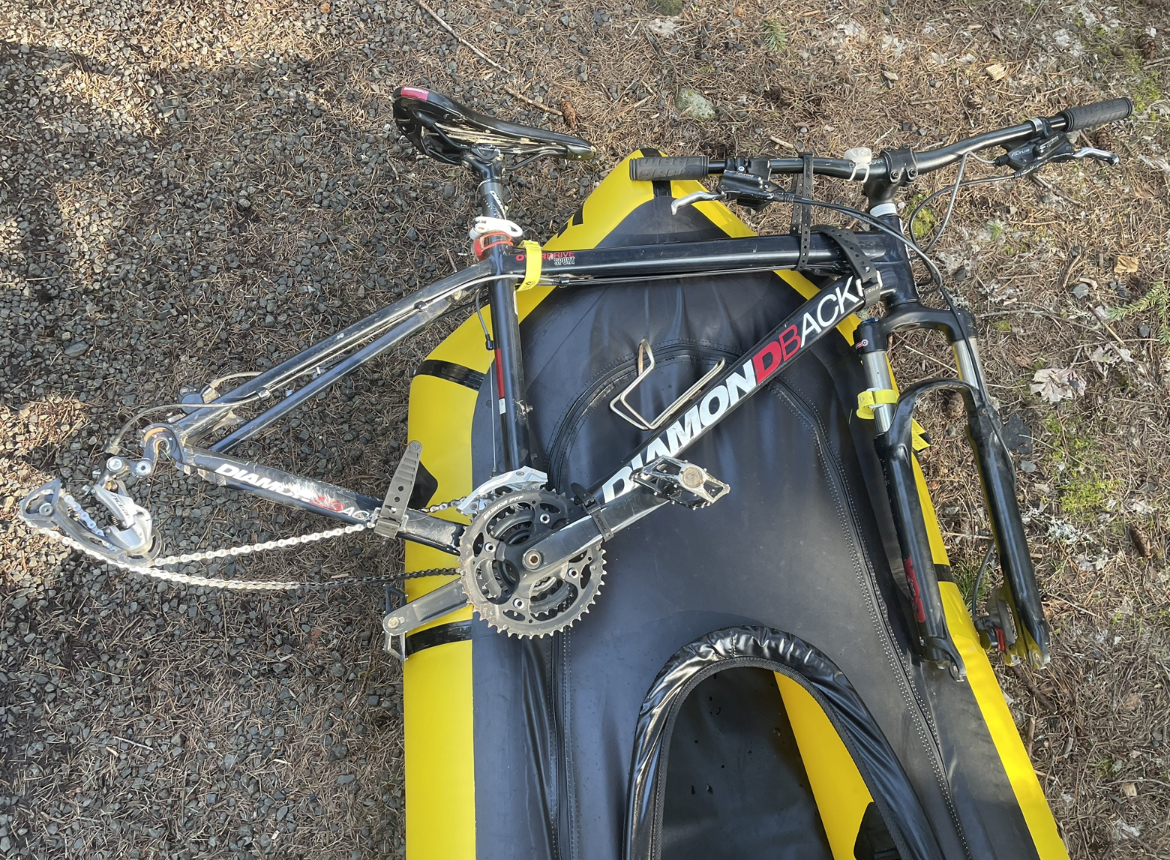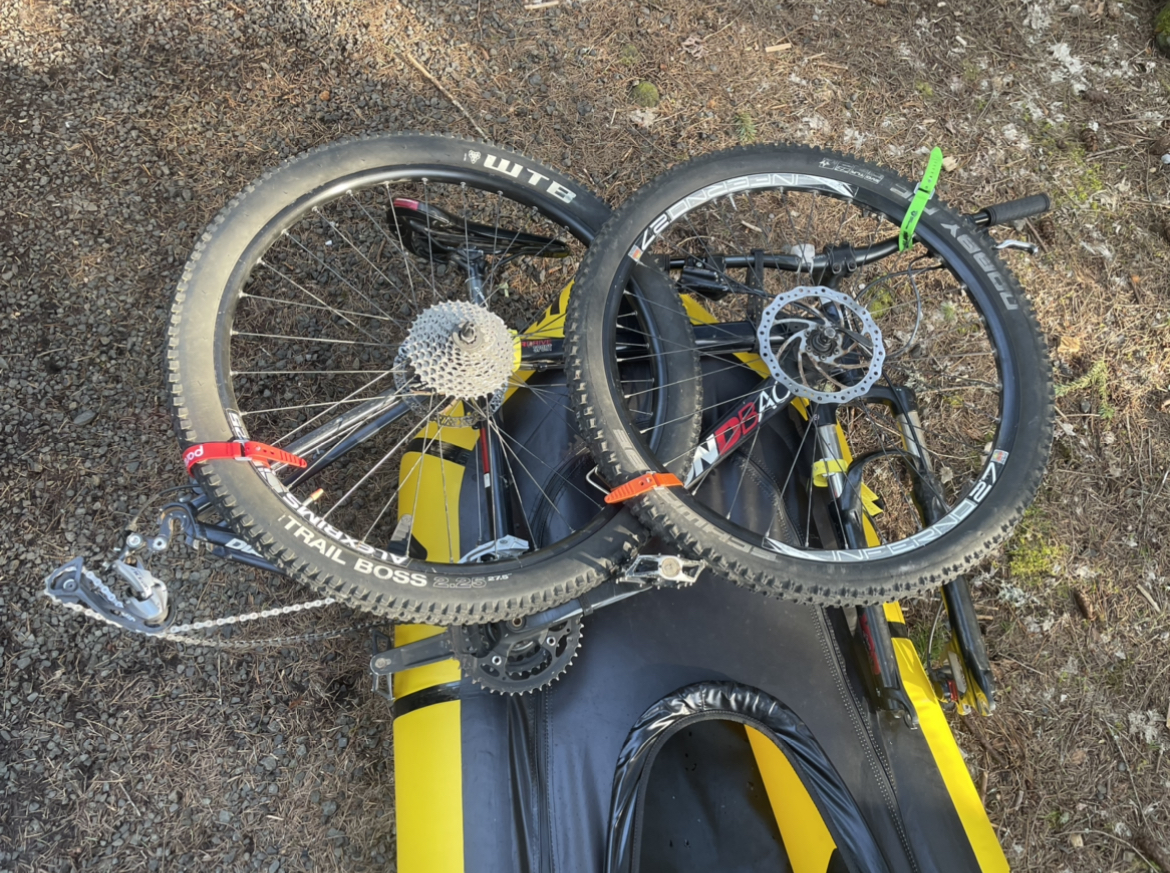What is Bikerafting?
Bike rafting is a mix of packrafting and biking. It can be anything from riding out your front door on a road bike and paddling across a small lake to mountain biking a hundred miles and paddling rapids on a weeklong expedition. Some people come from a biking background and want a packraft to use as a tool to go deeper on adventures. Some people come from a kayaking background and want to add something to their river trips. Either way it’s all about adventure and having the freedom to be self-contained and go wherever you want. Any packraft will work for bike rafting but our top 3 are the Rogue R-Deck, Twain Lite and the Nirvana Self Bailing since they are lightweight and pack up small.

-
Planning At Home
First is to plan your trip. Start out small and go for a day trip. I really recommend playing around on Google Earth to find trip ideas. Look for a nearby river or lake that you can ride to and use the measurement tools to find milage of the trip. Blow your boat up at home and practice setting everything up. This is great to test out different ways to rig your bike and packraft and find what works best for you. You might find out you need more straps than you originally thought or might need to figure out a different place for your dry bags.
-
Packing Your Bike
There are several ways to load your bike up. The most common way is to strap your packraft to your handlebars and then put the rest of your gear in a backpack. If you are going on multiday trip you will probably use a frame pack, seat pack, and panniers to store more gear.
-
Paddling With Your Bike
There’s several ways to attach your bike. Anywhere from just laying your bike on the packraft with no straps for a quick crossing to fully dissembling it and packing parts away in your TiZip storage compartment. What I’ve found the best is to remove both wheels, lay the bike down on the bow with the gears up and the handlebars towards the front.
Set up and Rigging
To get to the water you're going to have to strap your packraft to your bike.
I usually strap my packraft to my handle bars and then put my paddles in my backpack. I strap my packraft to the front using 2 32in Voile Straps or our Durango Handlebar Bag & Harness.

When you get to the water, you'll have to derig and break your bike down. First, lay the frame down with chain ring up and the handle bars towards the front. This makes more room for longer paddle strokes as opposed to having the bars closer to your body. Strap the bike down with a few straps, but compression straps, cam straps, webbing or cordage will work too. Also strap your handle bars and cranks to the frame to keep them locked in place.

Next strap the wheels to the frame/boat. Stack them on the frame spread out and strap them down with some straps.

Extra tips:
When removing the wheels make sure to screw the nut back down tight so you don’t lose the nut or your axle/skewer.
Practice paddling with your bike on because it’s going to handle a lot different with the bike upfront.
For whitewater, start really small on a short local run. Make sure you have your bike strapped down securely and have practiced flipping your packraft back over with the bike on and wet re-entry (climbing back in while in the water).
For more info check out the Bikerafting Guide Book.
